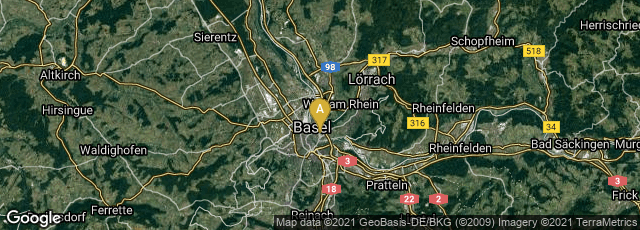

A: Rosental, Basel, Basel-Stadt, Switzerland
The abbot Johannes Trithemius’s (Tritheim's) Polygraphiae libri sex. - Clavis polygraphiae, a book on many forms of writing, but actually the first book on codes and cryptography, was posthumously published in Basel in 1518, two years after his death. Publication had been delayed because of ecclesiastical disapproval.
The codes that Tritheim invented and described in this book, notably the "Ave Maria" cipher, which takes up the bulk of the work (each word representing a letter, with consecutive tables making it possible to so arrange a code that it will read as a prayer), and the "square table", a sophisticated system of coding using multiple alphabets, were used for centuries. The remarkable title page is composed of a 7 woodcut blocks, showing the author presenting his book, and a bearded monk presenting a pair of keys, to the Emperor Maximilian. This block is within historiated woodcut borders of scholars holding emblems of science, arms of Maximilian and three other armorial shields at corners, and a reclining portrait of Trithemius himself at bottom.
Kahn, The Codebreakers (1967) 134-35.